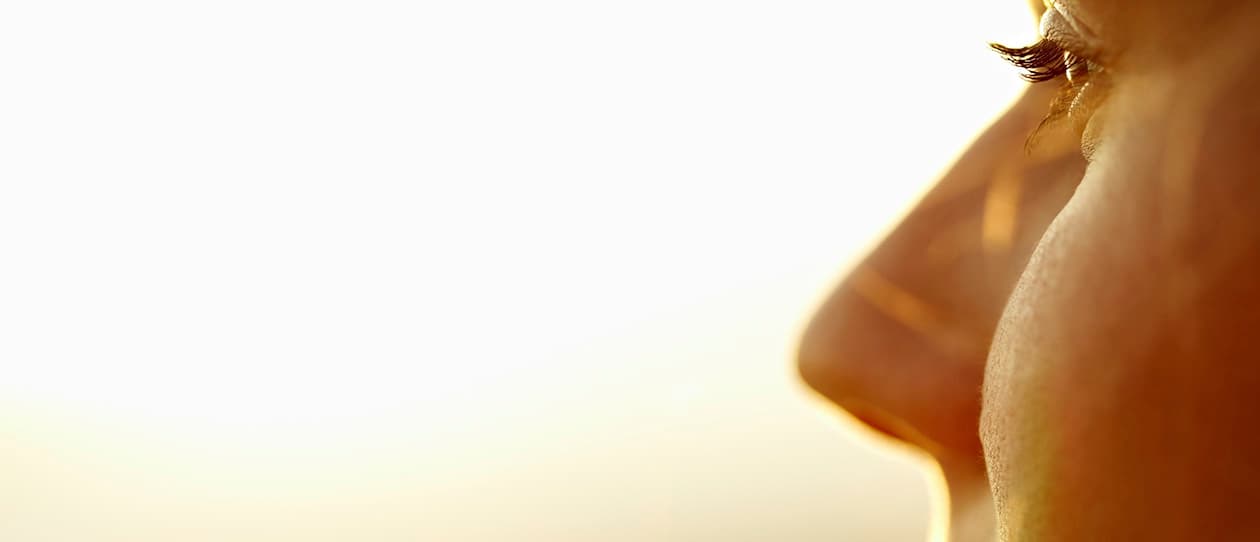
- Health hub/
- Stress relief & sleep support/
- Drishti - finding your focus


Is your mind usually awash with thoughts and stories? With so many visual cues and signs in our daily lives, it’s difficult to switch off. Throughout the majority of our day, we’re ‘in’ our head with numerous internal conversations taking place. Through the practice of yoga we ask ourselves to shift that focus, encouraging full body awareness. The position of the eyelids plays a major role in achieving inward, full body awareness.
When teaching a class, I notice that the students who are fidgeting and can’t settle into their pose (generally and understandably these are new students) are looking around the room, watching others and gazing from person to person, or at the lint ball on their yoga tights. Then there are those who focus their attention at one point and leave their gaze steady, breathing deeply and tasting the nectar of the pose. Their gaze or ‘drishti’ along with the breath is the key to that sweetness.
A drishti is a specific focal point that we use during our asana (yoga poses) and meditation practice. When our gaze is directed our attention naturally follows and we relieve stimulation by external objects. Taking a drishti provides us with the tool with which to develop single-pointed concentration of attention. By lowering the eyelids to a certain point, you actually change your physiology in a way that helps center you.
There are essentially two different muscles that work together in response to your physiological state to elevate the upper eyelids: the levator palpebrae superioris and the superior tarsal muscle. The levator palpebrae is under your voluntary control. The superior tarsal muscle is controlled by your sympathetic nervous system so it’s ordinarily not under your direct control.
You will notice when people are highly excited, their hyper-alert mind strongly activates voluntary muscles throughout the body, including the levator palpebrae muscles, which make the eyes open wide. And you will notice when people are relaxed or sleepy, their eyelids droop meaning the voluntary part of the nervous system stops telling the levator palpebrae muscles to lift the upper eyelids. The superior tarsals gradually release their grip – which is what happens when we drift off into sleep.
To ‘soften the volume’ of our internal dialogue, we basically want somewhere in between these two states (eyes wide open and shut). It’s a balanced and sweet state of calmness.
Finding your drishti
Often in a class situation your teacher will describe how to find your drishti, but here are a few general pointers:
- In your standing and balancing postures, choose the point where your gaze naturally falls by alignment of the posture.
- Keep the eyes soft and never strained.
- When coming into a pose, develop your alignment; then focus on the breath; then your drishti.
- Coming into the more passive poses, namely the forward bends, it’s possible to take your drishti inwards (antara drishti) and close the eyes.
You don’t have to be on mat to feel the calming effects of the drishti. Take a minute or two away from your computer screen to reduce tension and gather the sweetness of the technique:
- Sit in an upright position where the spine can be long and the shoulder blades draw down the back.
- Lower the eyelids or ‘soften’ the gaze towards the nose without going cross-eyed. You’ll know it’s the ‘sweet’ spot when your eyes feel free from tension and your temples soften.
- Allow the jaw to soften.
- Incorporate with some soft nasal breathing.
Kate Kendall is a writer and vinyasa yoga instructor. Her website is www.thenectar.com.au




